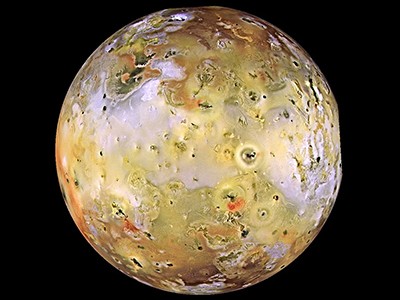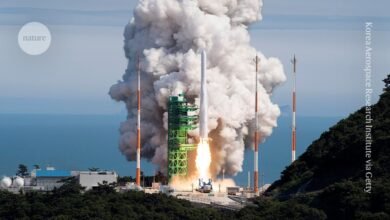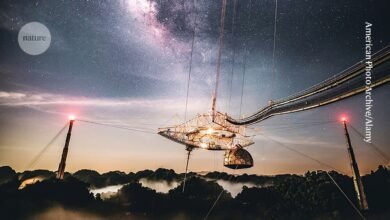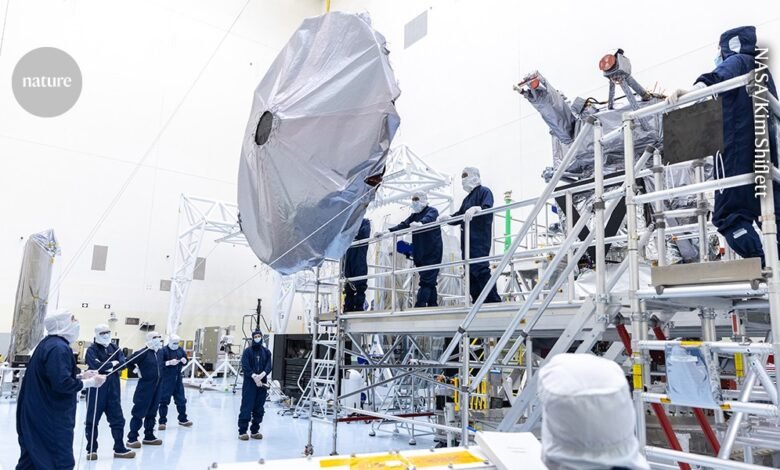
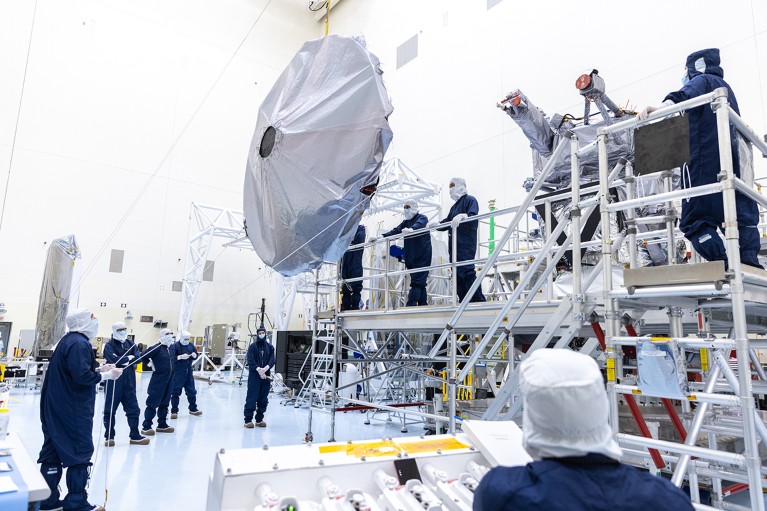
Technicians prepare to install Europa Clipper’s 3-metre-wide antenna on the spacecraft on 17 June at the Kennedy Space Center in Cape Canaveral, Florida.Credit: NASA/Kim Shiflett
After decades of dreaming of Jupiter’s moon Europa — and the vast ocean that probably lies beneath its icy surface — scientists are now weeks away from sending a spacecraft there. NASA confirmed yesterday that its Europa Clipper mission will launch on schedule, following a scare that it might have to be significantly delayed owing to possibly faulty transistors installed on the US$5-billion spacecraft.
“We are confident that our beautiful spacecraft and capable team are ready for launch operations and our full science mission at Europa,” Laurie Leshin, the director of NASA’s Jet Propulsion Laboratory (JPL) in Pasadena, California, said at a 9 September press conference.
With a mass of more than 3.2 tonnes, a height of roughly 5 metres, and a width of more than 30 metres with its solar panels fully unfurled, Europa Clipper is the largest spacecraft that NASA has ever built for a planetary mission. Yesterday, the mission passed what’s known in NASA parlance as ‘key decision point E’ — the final review hurdle that needs to be cleared before proceeding towards launch. The spacecraft’s launch window opens on 10 October.
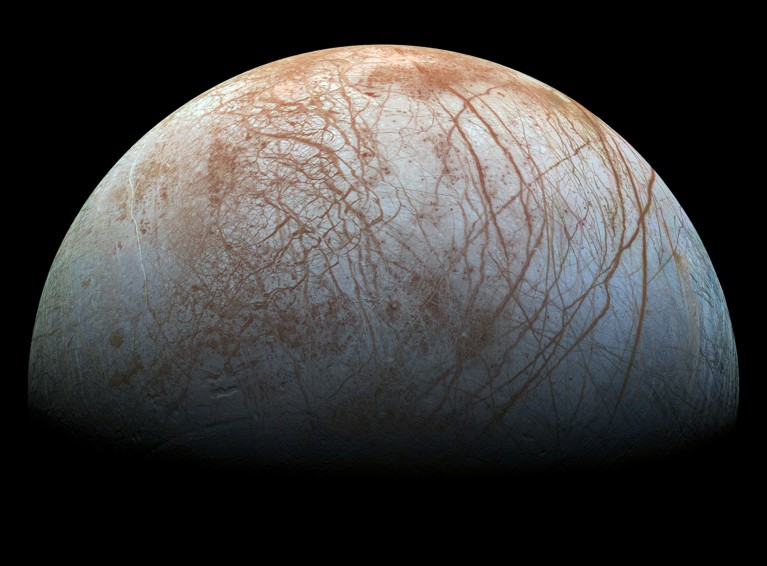
Jupiter’s moon Europa has an icy surface and few craters.Credit: NASA/JPL-Caltech/SETI Institute
If it takes off successfully next month, the orbiter will arrive at Jupiter in April 2030. Its nine instruments will then investigate both Europa’s icy crust and the ocean that scientists suspect lies beneath it, to determine whether the moon could support life as we know it. Previous missions have suggested1 that Europa’s icy surface hides a subterranean ocean of brine with more than twice the volume of water in Earth’s oceans. The moon’s fissured, seemingly young surface also implies that the satellite has active geology — hinting that Europa’s interior could be warm and dynamic enough for the complex chemistry of life.
There’s no such thing as a tricorder — a fictional instrument from the Star Trek universe — that we can aim at something to reveal whether it is alive, said Curt Niebur, the Europa Clipper programme scientist at NASA’s headquarters in Washington DC, during the press conference. “It is extremely difficult to be able to detect life, especially from orbit,” he said. “First, we’re going to ask the straightforward question: Are the proper ingredients there for life to exist?”
Choppy waters en route to an ocean world
Before the transistor scare, Europa Clipper had endured its share of setbacks. In 2019, NASA angered scientists by cutting a sophisticated magnetometer from the spacecraft, citing budget concerns. The mission also endured uncertainty for years over how it would get to space. That’s because the US Congress had long mandated that the spacecraft fly aboard NASA’s long-delayed Space Launch System rocket. Finally, in 2020, US lawmakers allowed the programme to select the reliable Falcon Heavy rocket from private firm SpaceX in Brownsville, Texas, for the launch.
Violent volcanoes have wracked Jupiter’s moon Io for billions of years
The possible transistor problem reared its head in May this year when NASA engineers learnt that batches of a certain kind of transistor already installed on the Europa Clipper spacecraft were misbehaving. The components, called MOSFETS (metal-oxide-semiconductor field-effect transistors), act like switches in electrical circuits. They came from a NASA supplier, the company Infineon, based in Neubiberg, Germany.
Because Europa Clipper is set to fly past Europa 49 times, at distances as close as 25 kilometres, the spacecraft will also need to fly through a fusillade of charged particles accelerated by Jupiter’s magnetic field, which is roughly 20,000 times as strong as Earth’s. This means that the electronics housed in the orbiter must resist radiation damage.
But in May NASA said it was examining whether the mission’s transistors risked malfunctioning. The agency launched into four months of 24-hour intensive testing at three different facilities: JPL; the Johns Hopkins Applied Physics Laboratory in Laurel, Maryland; and the NASA Goddard Space Flight Center in Greenbelt, Maryland. “This was a huge lift, and I think ‘huge lift’ is a huge understatement,” Leshin said.
After evaluating spare MOSFETs from the same batches that were installed on Europa Clipper, NASA found that the spacecraft’s circuits would perform as expected. This conclusion partially rests on the fact that during the first half of its four-year baseline mission orbiting Jupiter, the spacecraft will be in the worst of Jupiter’s radiation only one out of every 21 days. The rest of the time, the orbiter’s transistors can partially self-heal from radiation damage when gently heated, via a process called annealing.
“While Europa Clipper does dip into the radiation environment, once it comes out, it comes out long enough for those transistors the opportunity to heal and partially recover between flybys,” said Jordan Evans, the Europa Clipper project manager at JPL during the conference. “We can — I have high confidence, and the data bears it out — complete the original mission.”
Source link

